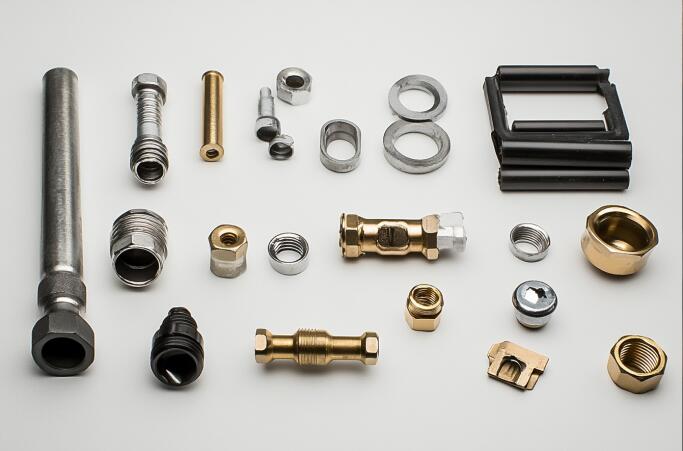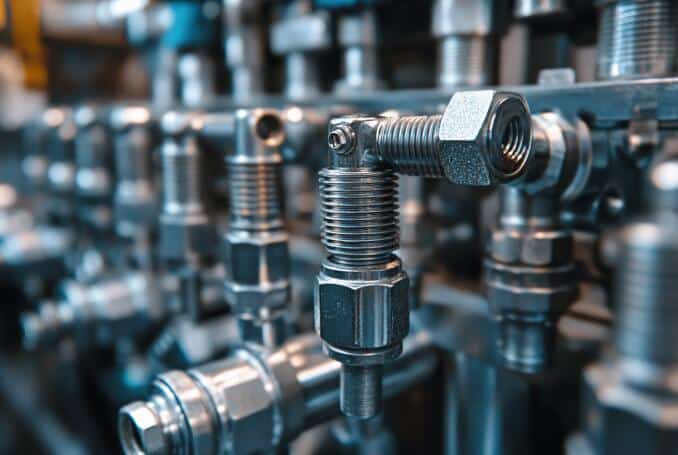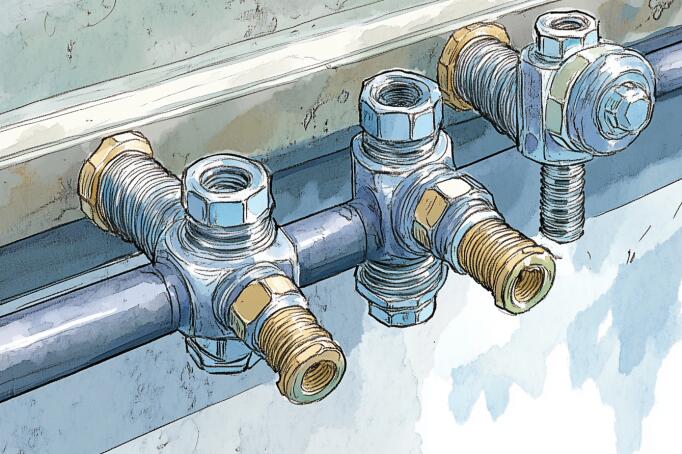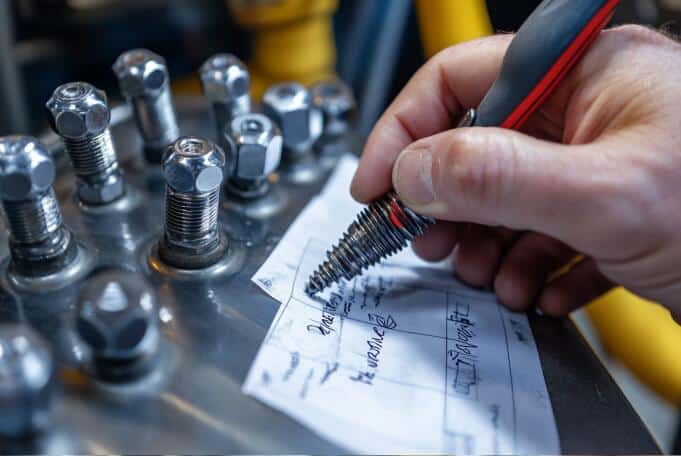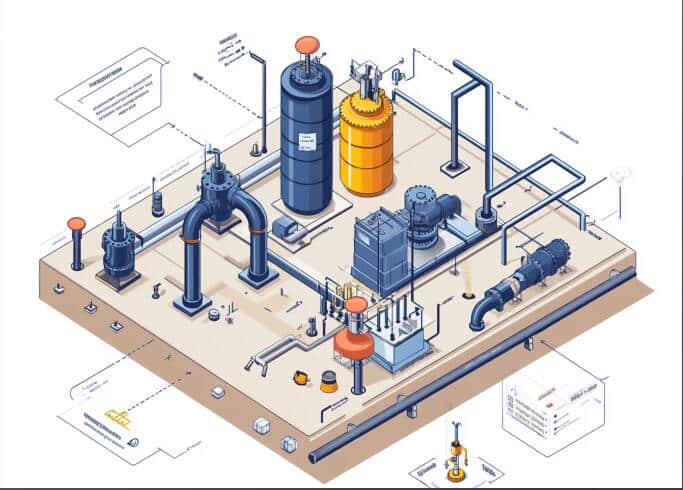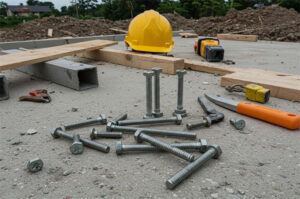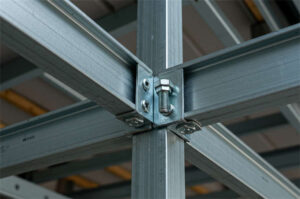Fasteners Used in Securing Pipe Systems
The piping system is crucial in transporting liquids, gases, and energy in today’s industrial and construction engineering. Piping equipment is indispensable in the oil and gas industry, petrochemicals, and everyday life. The standard fasteners that ensure piping systems’ optimized and reliable operation may seem trivial, but they are vital. These fasteners must withstand significant pressure and temperature changes while facing the challenges of corrosive media. Therefore, understanding the various types of piping fasteners and appropriate installation and maintenance methods is essential for ensuring the stability and safety of the entire system. In this article, we will analyze piping fasteners’ types, characteristics, installation considerations, and maintenance strategies to help engineers and technicians better understand and apply these core components.
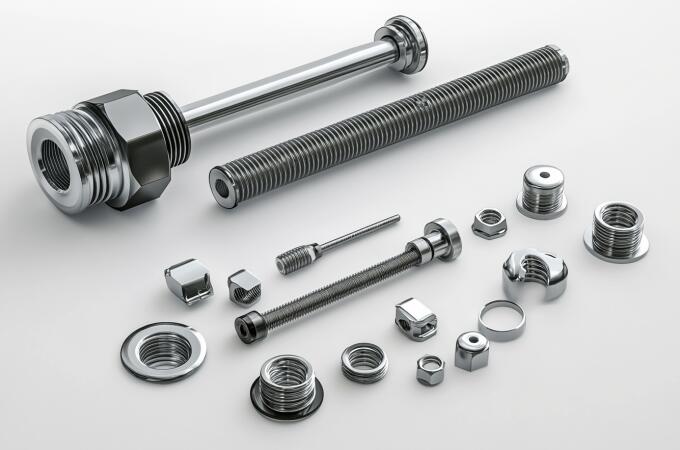
Standard Fasteners for Securing Pipes
There are various types of standard fasteners used to secure pipes, including:
- Pipe Clamps: Pipe clamps are standard fasteners that secure and connect pipes, valves, and other equipment. Typically made of metal, they offer good corrosion resistance and high-temperature durability. Pipe clamps are fixed using bolts or nuts to ensure a secure connection. Common types include DIN 32676 sanitary pipe clamps, DIN 11851 for the food and beverage industry, and DIN 2826 high-temperature and high-pressure clamps for the chemical industry.
- Pipe Hangers: Pipe hangers are commonly used fasteners for securing pipes to ensure stability and tightness. Types of pipe hangers include clamps, springs, U-bolts, and T-bolts. They are characterized by high strength, corrosion resistance, reliability, easy installation, and strong integration.
- Fully Threaded Studs: Fully threaded studs are fasteners without a head, tightened with wrenches or sockets. They are widely used in power pipeline connections.
- Flanges: Flanges are standard fasteners that connect and secure components together. They are extensively used in piping systems to ensure secure connections and prevent leaks. Flanges must be metal or plastic, providing strong and durable characteristics.
These fasteners ‘ different designs and material types are tailored to meet various industrial and civil requirements based on specific applications.
How to Properly Install Pipe Fasteners and Prevent Leaks?
To properly install pipe fasteners and prevent leaks, follow these steps and considerations:
- Select the Appropriate Fastener Type: Choose the proper fasteners based on actual needs, such as bolts, nuts, and screws, selecting the appropriate model and specifications according to the materials and sizes of the installed components.
- Preparation: Ensure the working environment is clean to avoid debris and dust. Inspect the quality and condition of the fasteners and tools, and regularly maintain damaged or deformed fasteners.
- Check Installation Parts: Before using fasteners, carefully inspect the specifications, shapes, and surface conditions of the parts to ensure there are no cracks or burrs.
- Use the Right Tools: Select appropriate tools to ensure proper installation of the fasteners. Incorrect tool operation can lead to over-tightening or insufficient tightening, affecting installation quality.
- Control Tightening Torque Strictly: During installation, ensure accurate control of the tightening torque. Over-tightening or under-tightening can adversely affect the performance and lifespan of the product. Use torque wrenches or pre-tension testing devices as required.
- Assemble Fasteners in Sequence: The order of tightening is also essential. Generally, tightening should be started from the center of the installation object and worked outward to ensure an even distribution of force.
- Clean the Joints: To ensure cleanliness before using valves, thoroughly clean the fastener used in securing pipes joints and valve connection areas.
- Select Suitable Gaskets: Choose appropriate gasket materials and specifications based on the fluid system’s requirements. Ensure the gaskets have good corrosion resistance, high-temperature resistance, and sealing capability, and install them correctly.
- Proper Tightening Torque: Ensure appropriate tightening torque when connecting valves and fastener used in securing pipes. Do not over-tighten or apply excessive torque to avoid damaging the connections.
- Check Installation Quality: After installation, promptly inspect the quality of the fastener installation and check the tightening levels of all fasteners, addressing any issues of looseness or over-tightening.
By following these steps and considerations, you can effectively prevent leaks during the installation of fastener used in securing pipes.
Common Misconceptions in Installing fastener used in securing pipes
When installing pipe fasteners, here are some common misconceptions:
- Using Coarse Threads Instead of Fine Threads: Many necessary connectors on equipment, such as shafts, commonly use fine-threaded bolts. If a part is missing during maintenance, some workers may replace it with a coarse-threaded bolt, which should be avoided. Fine-threaded bolts have a larger inner diameter, smaller pitch, and more robust locking performance, making them better suited for handling shock, vibration, and alternating loads.
- Inconsistent Holes: For bolts bearing lateral loads and shear forces, such as rotating shaft bolts, precise fit with bolt holes is essential for reliable installation. A significant gap between the bolt and the hole during assembly can lead to bolt loosening or breakage.
- Thicker Nuts Increase Connection Reliability: Some mistakenly believe that thicker nuts can increase the number of working threads and enhance reliability. In reality, thicker nuts can lead to uneven load distribution, making connections more likely to loosen.
- Using Multiple Washers: After installation, if the bolt is long, some may add a spring washer. This can lead to uneven stress during tightening, reducing pre-tension and compromising the connection’s reliability.
- The Tighter, the Better: Many workers mistakenly believe bolts should be “tightened to the max.” This can lead to bolt deformation or failure. Proper tightening torque is crucial, and tools like torque wrenches should be used to avoid insufficient tightening.
- Using Oversized Washers Is Acceptable: When suitable washers are unavailable, some may use more oversized inner-diameter washers, which can decrease contact area and reduce clamping force, leading to loosening under vibration and impact.
- Tightening Issues: Critical bolts should be secured appropriately with tightening devices after installation. Be mindful of using the appropriate locking mechanism.
- False Reporting of Tightness: If bolts or nuts are rusty or contaminated, they should be cleaned before installation. Dirty contact surfaces may appear tight during tightening but are not securely locked. Under conditions of vibration and thermal changes, such connections may loosen quickly.
Avoiding these common misconceptions ensures the proper installation of fastener used in securing pipes, significantly enhancing the overall safety and reliability of the piping system.
Post-Installation Inspection and Maintenance of Fasteners
Inspection and maintenance after fastener installation are crucial. Key processes and strategies include:
- Maintenance: After assembly, maintain the proper connection state and tightening force, checking for damage or corrosion. Inspect the appearance, connection status, elasticity, tensile strength, and signs of corrosion.
- Cleaning: Regularly clean fasteners and tightening locations to keep them free of debris. This helps prevent corrosion and extends the lifespan of the fasteners.
- Removing and Replacing Damaged Components: Severely damaged or corroded fasteners must be regularly maintained to ensure reliable and safe connections.
- Pressure Testing: Conduct pressure tests on pipes and valves to verify their ability to withstand design pressure.
- Repair Content: Includes disassembly, welding repairs, tension bolts, flange, gasket repair or replacement.
- Material Inspection: Ensure that the pipes and fasteners have quality certifications and that their mechanical properties and compositions comply with national or departmental standards.
- Cleaning and Lubrication of Fasteners: Fasteners can be corroded by dirt and grime during use, threatening their lifespan and integrity. Therefore, fasteners should be regularly cleaned and lubricated to ensure safe operation.
- Consider the Application Environment: Select suitable materials and surface treatments based on the usage environment to ensure the stability and durability of fasteners in various conditions.
By following these inspection and maintenance strategies, you can ensure fasteners’ long-term stability and reliability, safeguarding mechanical equipment’s regular operation and safety.
A detailed analysis of piping fasteners shows that although they occupy limited space within piping systems, they play vital roles. Each fastener has unique designs and functions tailored to meet different working environments and needs, from clamps and hangers to fully threaded studs and flanges. Proper installation and regular maintenance are vital to ensuring the long-term stable operation of piping systems. Avoiding common installation errors, such as using mismatched bolts and nuts or neglecting torque management, can significantly enhance system reliability and safety. Additionally, regular inspections and maintenance—such as cleaning, replacing damaged parts, and conducting pressure tests—are essential.
In summary, the correct selection, installation, and maintenance of piping fasteners are critical for the integrity of the entire piping system. As engineers and technicians, we should continuously learn and update our knowledge to ensure piping systems’ safe and efficient operation. Let us work together to contribute to the construction of safer and more reliable industrial and civil piping systems.
